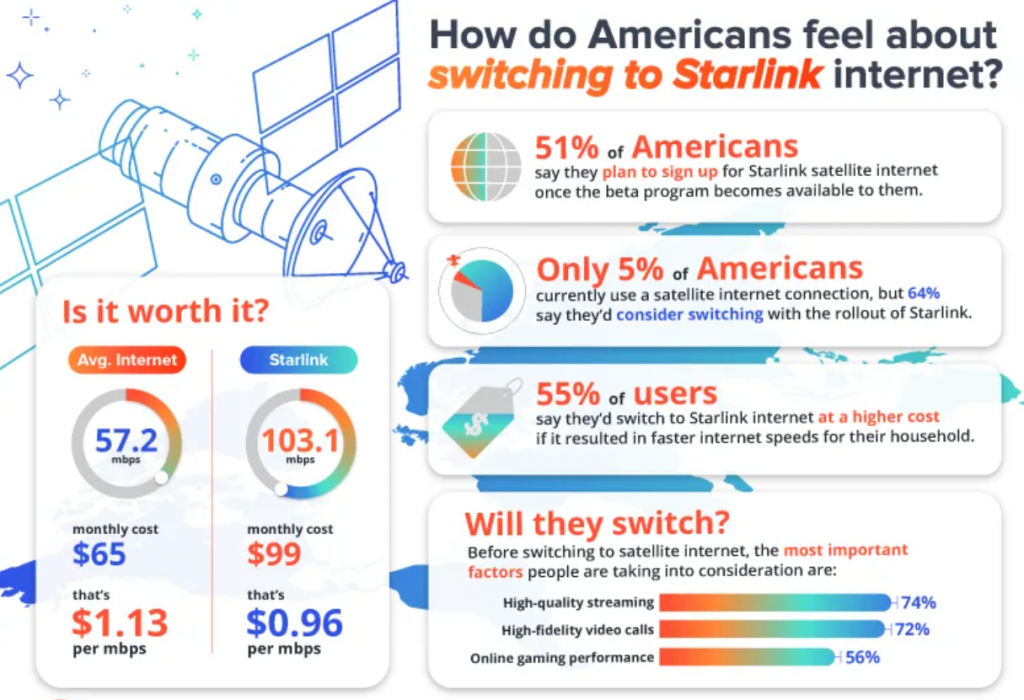
Chances are good that you hate your internet provider, even if your connection is fast. Now imagine your provider can barely give you reasonable speed for your distance-learning kids, your forced-to-work-from-home partner, or yourself for classes, video meetings, and streaming The Expanse. That’s the state of internet for far too many, especially in rural areas, and the only reasonable solution on the horizon is the promise of truly fast connections via satellite. That’s coming, thanks to Amazon’s eventual Project Kuiper (allegedly with speeds up to 400Mbps) and SpaceX’s Starlink. The latter is right around the corner from a real launch (we hope) in 2021. More beta testing invites may even go out this month.
Starlink buzz is strong enough that Reviews.org did a survey of 500 people over age 18 to ask whether they’d consider getting on board. Despite the cost ($499 for an antenna and router, plus $99 a month), over half of those surveyed said they’re ready to sign up for the beta program, and 55% who don’t use satellite now would stick with Starlink permanently if the connection speed was faster—even if it was more expensive than what they currently have. Forty-four percent of all respondents would stick with Starlink if they could make payments on the equipment rather than paying the $499 up front.
The most important decision factors for survey takers? Streaming (74%), video calls (72%), and online gaming (56%).
The average monthly internet price in the US is $65, so Starlink is pricier in that sense. But broken down by price per Mbps, Starlink comes out cheaper—$0.96 per Mbps (currently averaging 104Mbps on downloads) versus $1.13 per Mbps for the competition, on average.
FYI, Starlink’s speed eclipses other satellite internet providers in a big way and also lowers latency significantly. That means the quality of the connection is going to be much closer to what you get with cable (but not quite as good as fiber to the home). Current Starlink latency is averaging 39 milliseconds. (Read more about internet connection quality in The Best Gaming ISPs for 2021The Best Gaming ISPs for 2021.)
In a previous PCMag report on the speeds being seen in real-life usage of Starlink tests on Ookla’s Speed Test (which is owned by PCMag parent company Ziff Davis), we found average download speed was already increasing, shooting from 33.3Mbps on average last summer to 79.5Mbps downloads as of October 2020. That’s more than three times the best download speed you’d ever see from the closest existing satellite internet competitor (Viasat). And don’t even get me started about Viasat’s latency.
And if you’ve got the right equipment, Starlink will even work in cars.





























